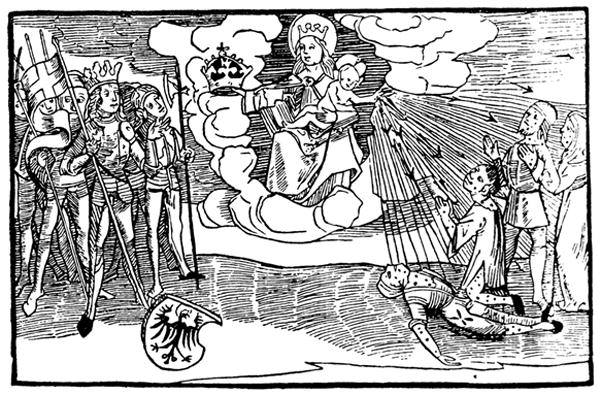Figure 2.

This illustration was originally featured in a broadsheet in verse, De Pestilentiali Scorra siue Mala de Franzos Eulogium, which was published in September, AD 1496, in Germany, by Sebastian Brant. According to Gilman66, the image shows a closed community of syphilitics, three male and one female, being punished by the flagellum Dei (the ‘whip of god’) for their sexual transgressions. The arrows emanating from the hands of Jesus function as agents of infection and signify the martyrdom of the victims, who suffer as a consequence of the fall from Eden. Later re-workings of this illustration place more emphasis on the male sufferer, emphasizing that he (and thus men, overall) are the true victims and women, through their sin, are to blame for the illness. The black spots or ‘blatterns’ (e.g., blisters) on their faces symbolize infection with the disease now known as syphilis and are an indicator of moral blight.
